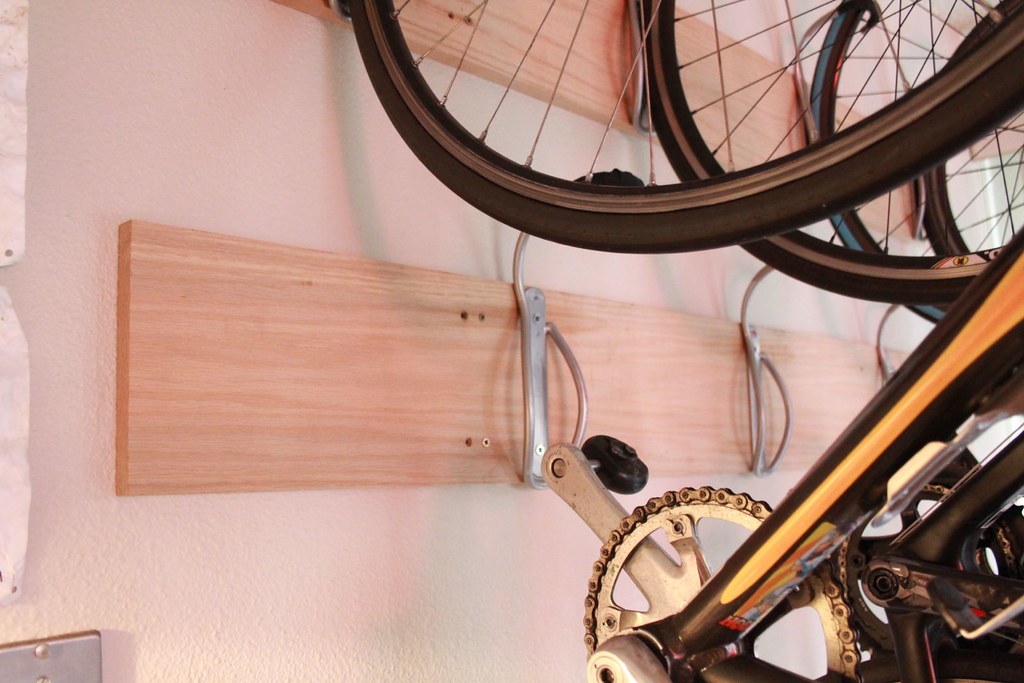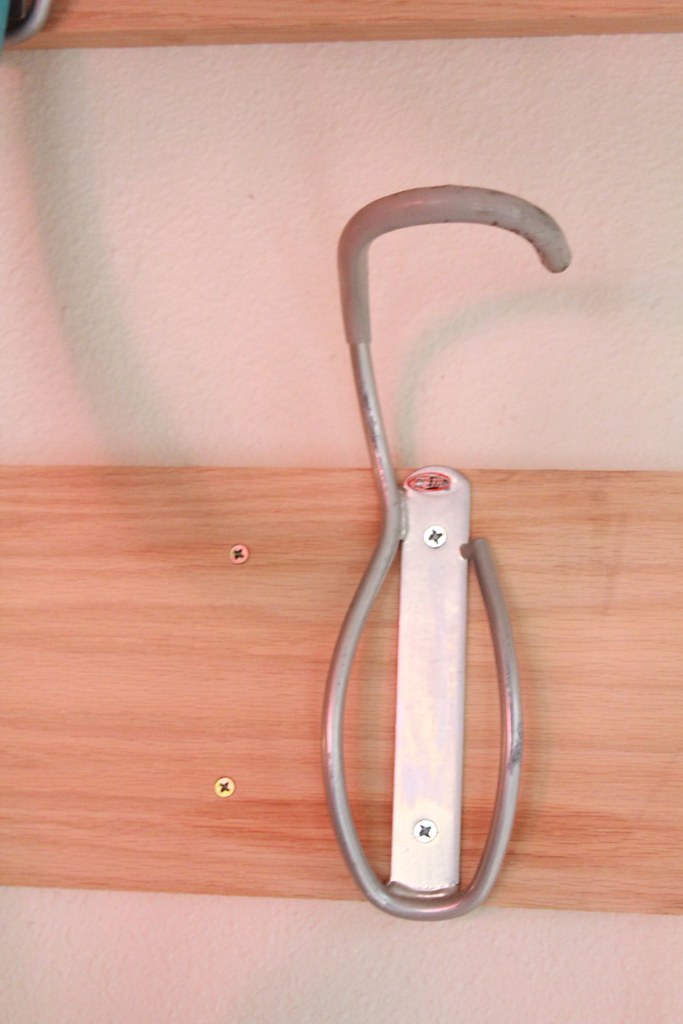I just moved to a new apartment. My old place was a studio loft, but the neighborhood, floor layout, and neighbors (except for the cool DJ promoter who keeps putting me on the guest list for his gigs) had lost their novelty. I hate moving like I hate dental appointments without nitrous, but my CX buddies came through like champs, and we got it done in an afternoon.
One of my parameters for choosing a residence is where I can store my bikes. I needed a wall to mount them en masse. Ever since my college dorm days, I have refined my bike storage strategies. My current strategy, one that I installed in my old apartment, is to screw individual vertical wheel-hook type mounts to a hardwood plank and then anchor the whole assembly to the wall, precisely anchoring it with BIG ASS wood screws to the wall studs. That way I need only four holes to mount 30-40kg of bikes. I choose 8” x 1” hardwood planking because pine is a little flimsy; it’ll warp over time unless you use more screws to engage it to more studs. Also, the individual racks will use short screws with only 3/4” thread engagement on a nominal 1” thick plank. That might not be enough to hold up over time unless you use a strong substrate like oak or poplar. Likewise, the screws to anchor the mounts to the plank need to be short so as not to protrude beyond the backside of the plank, but they’ll need to stout so that they don’t pull out over time.
A critical part of this idea is precisely locating the wall studs behind the drywall. You’ll need a good stud finder (since I’ve found that stud spacing often diverges from the supposedly standard 16 inches) , and it might be a good idea to drill a tiny pilot hole to verify before you align the whole assembly. As for the big ass wood screws to be drilled into the wall studs, they should be at least 3” in length. Pre-drill the plank so that screw threads pass through with minimal or no resistance but don’t make the hole so big that the head of the screw sinks too deep. This will make mounting easier. Also, driving a 3” wood screw into a stud takes a fair bit of power. If you have a wussy powerdrill, it may not be able to do it. If you have a fiercely powerful one without a torque limiter, you could strip the screw head if you’re not careful. A couple tricks that can help would be to drill a small bore pilot hole and to grease the threads of the screw. You want to drive the screw all the way so that plank is held fast with no room for movement (which could over time fatigue the screws).
The beauty of this arrangement is that you can set the bikes at spatial intervals independent of the studs. My bikes all have 40cm or narrower handlebars which is almost exactly 16”, but still my method allows me to place the bikes in between the studs so as to fit the room better. Then I add a second plank with a row of mounts staggered. In less than 70” of wall space, I can fit 7 road/track/cx bikes. For bikes with wider bars (especially the newer trend for wide riser bars on mtbs) you’ll need to adjust your design accordingly. In the pictures I am currently only using the upper row of hooks. When I use the lower row, I generally hang bikes from it by the rear wheel so that the handlebars from bikes of the both rows don’t conflict. One last tip is that you should carefully consider how much space between the hook and the ceiling will be necessary to fit the bike; the wheel needs follows an in-and-down path so will need additional clearance above the wheel’s resting height in the mount.
I had chosen to use individual mounts from Delta, but there are several others that would work just as well.
…We're riding townies, adventure, and mountain bikes. Find recommendations on our store page. As Amazon Associates we earn from qualifying purchases.


